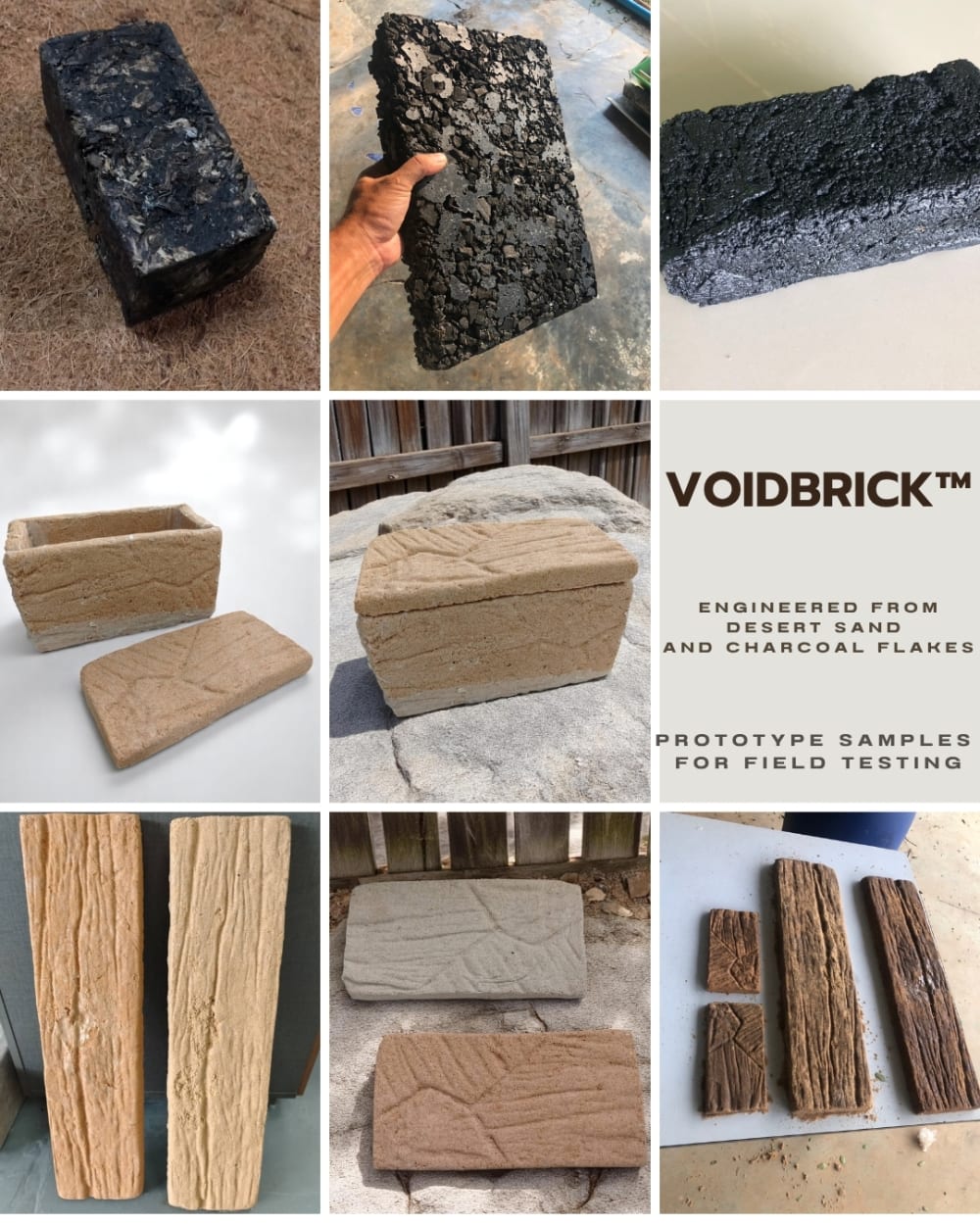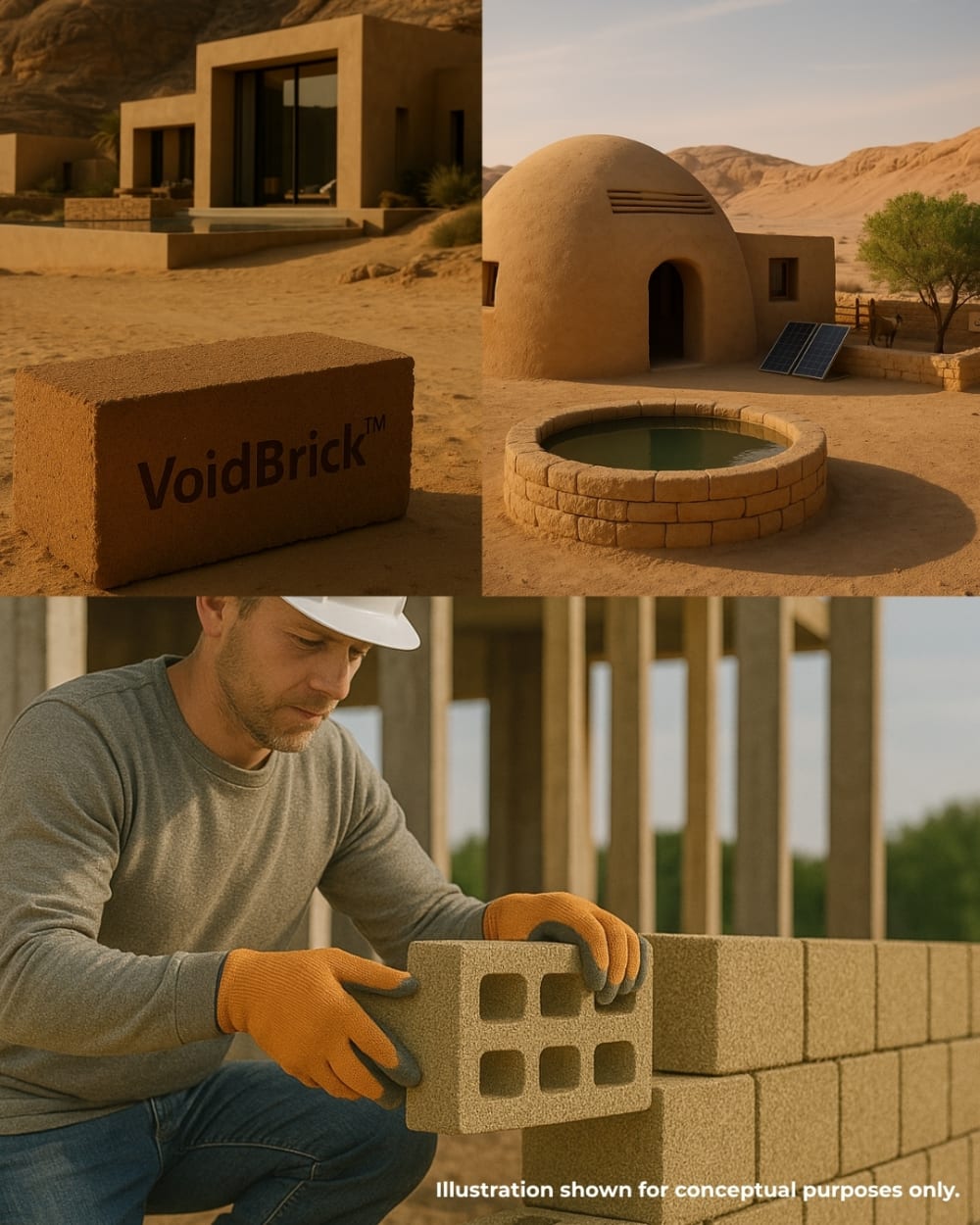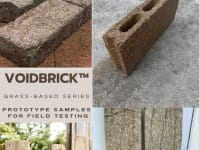VoidBrick™ is a passive thermal building material that reduces indoor energy demand by minimizing reliance on HVAC systems in temperature-stressed environments. Engineered from agricultural and industrial waste and bonded with TPoxy™—a proprietary nanotechnology-based binder under IP filing by Doctor T Co., Ltd.—VoidBrick™ delivers energy savings through its structure, surface properties, and deployment adaptability.
Its thermal regulation stems from a dense, non-porous core and a hydrophobic nano-coated exterior that reflects solar radiation, repels moisture, and suppresses convection. In tropical tests, interior-facing surfaces stayed as low as 29°C—up to 20°C cooler than nearby concrete under direct sun. In cold simulations, VoidBrick™ retained interior warmth, indicating that in frigid climates, internal spaces remain insulated from outdoor drops. This bidirectional buffering makes it suitable for off-grid shelters, refugee housing, and infrastructure in zones with extreme temperature swings.
Unlike cement-based products, VoidBrick™ contains no mineral binder and cures at ambient temperature—cutting energy input and embodied carbon. The modular process allows local production using biomass waste or desert sand, enabling construction in regions with limited access to conventional supply chains and aligning with global decarbonization goals. Its lightweight nature and high strength-to-weight ratio make it ideal for temporary and permanent housing alike.
Field trials demonstrate practical strength and resilience. A block made from Mui Ne desert sand withstood the weight of a pickup truck. Another block from pulverized grass waste—drilled and partly cut—sustained a 34 kg dumbbell without failure. A sample from this batch, manually compressed without industrial equipment, achieved 9.22 MPa compressive strength in lab tests by Kasetsart University.
Safety is central to VoidBrick™’s formulation. TPoxy™ contains no formaldehyde or cancer-linked substances and has tested negative for heavy metals. This ensures that VoidBrick™ remains safe to handle, transport, and use—even in enclosed or high-contact environments such as schools, homes, or disaster-relief camps. It also avoids toxic fumes during fires, enhancing indoor air safety.
Additional benefits include floatation: the grass-based variant is buoyant, and when infused with charcoal flake additives, can maintain water stability. Weather resilience has also been promising: grass-based blocks left outdoors in tropical Thailand for over four months showed no visible degradation despite rainfall, high humidity, and intense sunlight.
Its moldable nature allows for architectural customization—, modular assemblies, or decorative textures—without compromising strength. This flexibility supports both emergency needs and long-term community development.
Target stakeholders include humanitarian groups, disaster-response agencies, and climate-resilient developers in the Global South. VoidBrick™ supports long-term sustainability by enhancing thermal comfort, reducing HVAC load, and enabling carbon-neutral construction using local waste streams. It empowers communities to build with their own materials, reducing costs and fostering self-reliance.
In summary, VoidBrick™ is not just a building material—it is a passive thermal system built for resilience. Fire-resistant, non-toxic, and ready for diverse climates, it introduces a new class of low-carbon infrastructure—engineered from waste, optimized for impact, and deployable where conventional solutions fail.
Video
Like this entry?
-
About the Entrant
- Name:Voraya Jirawatcharakorn
- Type of entry:individual
- Software used for this entry:์Not Applicable
- Patent status:pending








